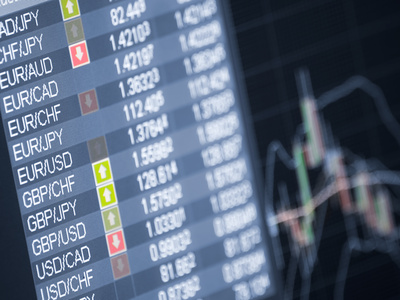This article covers the 4 fundamental economic indicators for Forex including Gross Domestic Product, Retail Sales, Industrial Production & Consumer Price Index.
The principle application of the Foreign Exchange Market, Forex, is in assessing the health and approximate value of world currencies. It is the world’s most liquid financial market, is based on a fundamental process of technical analysis, and offers the capability of currency conversion and exchange.

One of the main assets of the Forex system lies in its decentralization from major centers of trade, which allows it to operate round the clock, keeping its doors open to a variety of buyers and sellers throughout the world.
How Does Forex Work?
In order to be consistently on top of new trends in the global sphere, Forex assesses the economic indicators of various countries, in order to size up their particular economic performance. Those who trade in Forex rely on this information, and thus it is essential that it remains continually up to date.
But, this isn’t always something that’s a matter of black and white figures – there are certain elements that Forex looks to when determining the present value of a competitive country. Just like in dealing with stocks, any alteration in the economic trends of a certain country can lead to significant price and volume changes.
The four most significant indicators that Forex refers to in assessing a country’s economic situation are: Gross Domestic Product (GDP), Retail Sales, Industrial Production, and Consumer Price Index.
What is GDP (Gross Domestic Product)?
GDP is a market value reference to both services and goods produced within a certain country over the course of a year or other specified time period, it is often the most significant indicator of the economy and standard of living a country has, generally demonstrating the way money is spent and earned there.
As a result, it is one of the most meticulously watched statistics used by Forex in determining the value of a certain country.
How Does Retail Sales Affect Forex?
The second indicator, a Retail Sales report will tally the receipts of retail stores within a given region. Just like with GDP reports, Retail Sales measurements capture the spending trends of a nation, with a predominate focus on the following:
• Motor Sales
• Building Materials
• Food
• Electronics
Forex traders see this as a prediction of future market performance, pushing investments up or down based on results.
What is Industrial Production?
Industrial production refers to the data concerning factory, mine, and other large-scale production within a nation. The information is based almost entirely on the manufacture of raw volume, and can include things like electric utilities as well as book publishing and newspaper distribution.
Historically, industrial production is the keystone indicator for the up and coming business trends, often predicting large changes in business cycles and output. This subject is most prone to extreme adjustments and is often the cause of serious alterations in a nation’s currency.
What is the Consumer Price Index?
Lastly, Consumer Price Index is the calculation of the price changes for consumer goods, spanning more than 200 categories. It is here in this micro-scale that the first signs of inflation in a country can be spotted. CPI also directly affects fixed-income securities and pension plans, which can have a major impact on the economic outlook of a country.
Although there are many economic indicators used by Forex to determine the value of a country, it is these four that bear the most impact. Harnessing the powers of assessment makes these tools irreplaceable resources for currency traders the world over.